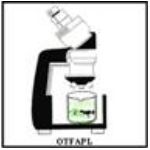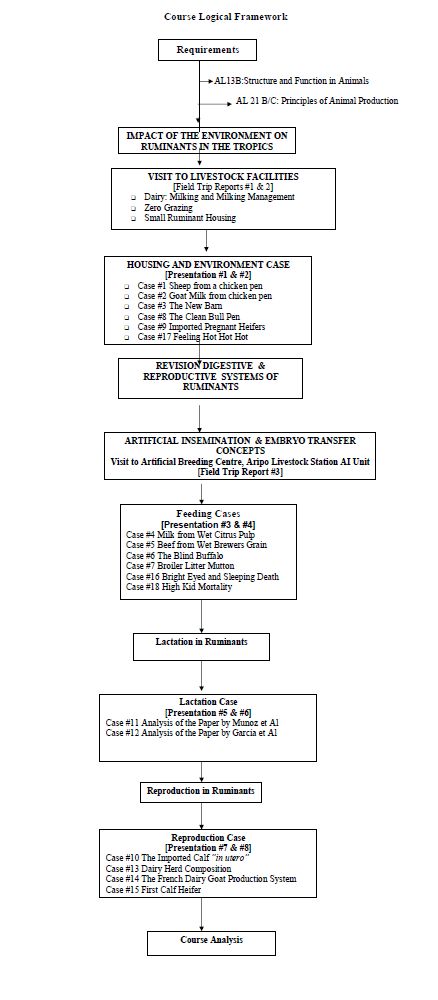
Course Outline
Outline of Course Modules and Units
In this section, we cover:
1.1 Course objectives - what this course is about and how it contributes to ruminant production in the tropics
1.2 Learning objectives - what you should have learnt at the end of the course
1.3 Course logic - the way in which the various modules and units link together. Ideally, the chronological order in which material should be taught
1.1 Course objectives - what this course is about and how it contributes to ruminant production in the tropics
1.2 Learning objectives - what you should have learnt at the end of the course
1.3 Course logic - the way in which the various modules and units link together. Ideally, the chronological order in which material should be taught
Course description:
This course studies the structure of the ruminant industry in CARICOM, brief physiology of ruminants, management practices including breeds and breeding, nutrition and feeding, heath and disease prevention and control, housing and waste management, record keeping, planning new enterprises and use of new technologies.
1.1 Course objectives
1.1.1. To become familiar with the structure of ruminant production in CARICOM
1.1.2. To briefly review the important physiological principles governing ruminant production
1.1.2. To apply the principles of animal production to ruminant production in the tropics
back to top
1.2 Learning Objectives
At the end of this course students should be able to do the following:
(i) To list and understand the Factors affecting Ruminant Livestock Production in the Tropics.

(ii) To be able to state the role of environment and housing in commercial ruminant livestock production.
(ii) To be able to list the essential features of ruminant livestock production systems;
(iii) To be able to explain the effect of the tropical environments of ruminant livestock production;
(iv) To be able to list the Physiological States for the following ruminants:
- Dairy Cattle
- Beef Cattle and Buffalo
- Sheep and Goats
(v) To be able to list and describe the essential components and management practices involved in the production systems of the following animals:
- Dairy Cattle
- Beef Cattle and Buffalo
- Sheep and Goats.
back to top
1.3 Course Logic
This course is ideally taught in chronological order according to the below flowchart.
